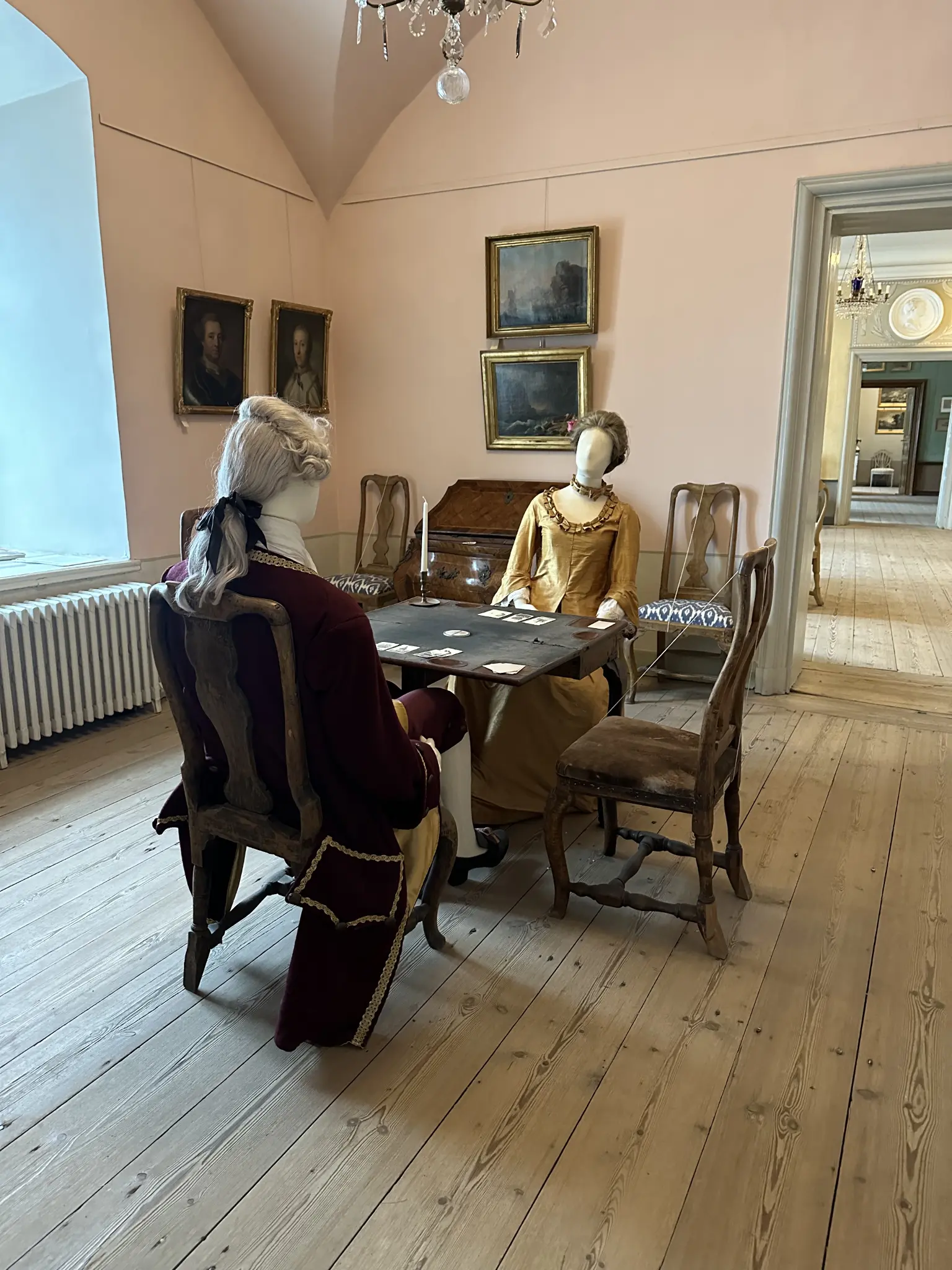
Room 2. Guest Room


Room 2. Guest Room
The fermak as a room type became common in the 1700s. It served as a living room or parlour where the finest, most comfortable and modern furniture could be placed. The room was used to receive guests, socialise, play games and make music. The museum room is decorated mainly in Rococo style. Rococo was the dominant style of art and decoration in Europe from about 1730 to 1780, with a light and ornate style and comfortable, arched furniture. Rococo favoured rustic romanticism, flowers, plants, fruit, birds and seershoes. The decoration featured S and C-shaped curves and asymmetry, and China and the Orient inspired exoticism. Another important centre of the Rococo period was London and it was the English imported furniture that became the inspiration for Finnish craftsmen.
In the interiors of the nobles homes, the walls were lined with low chest panels topped with printed paper wallpaper or painted and framed landscape wallpaper. The use of window curtains became more common. Tiled stoves were used as a source of heat and were designed into the interior. Their thermal efficiency was decisively improved thanks to the Swedish invention of the heating duct, published in 1767.
the fashionable cuccu card game is played at the gaming table.
